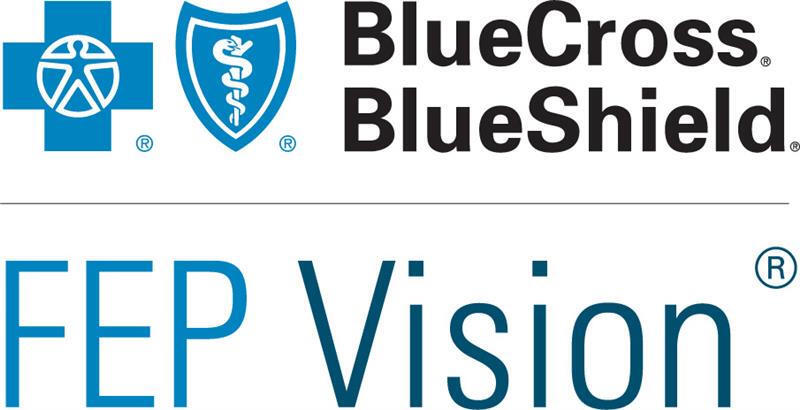Veterans who experienced certain traumatic events during their service may be able to receive disability compensation in the form of non-taxed monthly payments, as well as free health care, including specific PTSD treatment.
For a veteran to receive these disability benefits, he or she must demonstrate that the PTSD was caused, or made worse, by events that occurred during active military service. The adverse events could also have happened during military training, whether active or inactive duty.
Additionally, the Department of Veterans Affairs also reviews post-service disability claims, meaning that if the PTSD didn't appear until after active-duty service, it may still be covered as long as veterans can show the service caused the condition.
For any disability claim, the condition can be one that affects the mind, body or both, and this also applies to PTSD.
PTSD is the fourth-most prevalent type of benefits claim the VA receives. Of the roughly 5 million veterans who receive compensation benefits, more than 1.1 million get PTSD benefits.
Eligibility begins with veterans demonstrating and documenting the effects of the trauma and submitting a claim to the government.
What Is PTSD?
PTSD, which stands for Post-Traumatic Stress Disorder, is a reaction to trauma that lasts beyond the first month after the adverse experience and negatively impacts mental and physical health, social connections, daily tasks and/or work performance.
After any trauma, it's normal to feel sad, angry, stressed or disoriented. It's also common to have problems focusing, sleeping or getting along with others. Most people who are exposed to a traumatic, stressful event experience some of the symptoms of PTSD in the days and weeks after exposure.
A PTSD diagnosis may be made if these difficulties persist and worsen beyond the first few weeks. Data suggest that about 8% of men and 20% of women go on to develop PTSD, and roughly 30% of these individuals develop a chronic form that persists throughout their lifetimes.
PTSD risk increases "when the traumatic event is more severe, violent, occurs over a longer period of time or involves harm to oneself or loss of a loved one," according to the American Psychiatric Association (APA).
An estimated 7.8% of Americans will experience PTSD during their lives, with women (10.4%) twice as likely as men (5%) to develop PTSD. About 3.6% of U.S. adults ages 18 to 54 (5.2 million people) have PTSD during the course of a given year.
About 30% of the men and women who have spent time in war zones experience PTSD.
PTSD is treatable.
PTSD Symptoms
PTSD can take a major toll on mental health. According to the Mayo Clinic, symptoms may include:
- Flashbacks: Reliving the traumatic event as if it were happening again
- Uncontrollable thoughts or intrusive memories about the event
- Nightmares
- Severe anxiety
- Severe emotional distress
- Unpleasant physical reactions when reminded of the traumatic event
Left untreated, PTSD can lead to hopelessness, memory problems, relationship conflicts, feelings of numbness and detachment, and lack of interest in hobbies.
PTSD can cause symptoms in the body as well as the mind. Physical symptoms can include high blood pressure, increased heart rate, fatigue, muscle tension, nausea, joint pain, headaches and other physical pain, including back pain, according to the APA.
Some who suffer from PTSD also experience depression and may be more likely to misuse alcohol and prescription drugs.
PTSD rarely goes away on its own, so it's important to seek help.
Read More: PTSD Frequently Asked Questions
How Is PTSD Rated by the VA?
The VA will rate your PTSD based on the severity of your disability. The higher your rating, expressed as a percentage, the higher the amount of disability compensation you'll receive.
Many factors are taken into account as the VA evaluates your PTSD disability claim. These factors include reports from your mental-health caregivers and results from your compensation and pension (C&P) exam, if relevant.
VA Rating Factors for PTSD
Under the current VA rating system for PTSD, the government considers stressful events to be contributing factors if the events are a result of combat, personal trauma or other life-threatening situations.
The veteran is evaluated partly based on the symptoms he or she is suffering as a result of the traumatic event or events These symptoms include the following categories:
- Exposure to actual or threatened death, serious injury or sexual violation. This includes witnessing traumatic events or learning of them happening to someone close to the service member.
- Intrusive symptoms such as distressing memories, nightmares and flashbacks.
- Avoidance of people, places and situations that remind the sufferer of the traumatic events.
- Negative mental states such as detachment, memory loss, distrust, hopelessness, self-blame, fear, anger, guilt, shame, loss of interest in activities, etc.
- Hyperarousal states, including irritability, angry outbursts, hypervigilance, problems concentrating, easy to startle, trouble sleeping and more.
View more details about these categories of PTSD symptoms here.
Read More: Overcoming Barriers to PTSD Care
Steps to Making a VA PTSD Claim
Studies show that between 13.5% and 20% of Iraq and Afghanistan veterans meet the criteria for a PTSD diagnosis, as do 12% of Gulf War veterans and 15% of Vietnam veterans.
The VA defines what is considered a traumatic event, also called a "stressor," for the purposes of veteran disability claims.
The veteran must have either "suffered a serious injury, personal or sexual trauma or sexual violation" or, in a second broad category that also falls under PTSD, the veteran was "threatened with injury, sexual assault or death."
Nearly half of the claims denied for PTSD related to military sexual trauma were not properly processed, according to a 2018 Office of Inspector General (OIG) investigation.
For disability benefits eligibility, the stressor must have happened during a veteran's military service and -- as a result of their PTSD symptoms -- they cannot function as well as they did before.
Veterans who received an other-than-honorable, bad conduct or dishonorable discharge may not be eligible for VA disability benefits.
Read More: PTSD Myths Persist in the Military Community
Present a Current PTSD Diagnosis
In addition to the other requirements for a VA disability claim, a doctor must diagnose the veteran with PTSD in order for this type of claim to move forward.
Identify an In-Service Stressor that Caused PTSD
For a successful PTSD claim, a veteran must not only have a medical diagnosis, but must also provide evidence that the disorder is associated with a stressor that occurred during military service.
"For PTSD purposes, a stressor is a psychologically traumatic event that the person experienced, witnessed or was confronted with that involved actual or threatened death or serious injury, or a threat to the physical integrity of themselves or others," according to the VA.
Read More: Supporting a Family Member with PTSD
Prove Connection Between Your Service and PTSD
When filing your VA PTSD claim, you will be asked to document the details of any incidents that occurred that caused your PTSD.
Generally, the veteran must provide "credible supporting evidence of a specific in-service stressor," according to the VA. This requirement differentiates PTSD claims from other types of claims.
However, there are some exceptions to this rule:
- A diagnosis of PTSD was made during service.
- The veteran engaged in combat with the enemy.
- The stressor is related to a fear of hostile military or terrorist activity.
- The veteran was a prisoner of war.
- Other evidence exists to support the occurrence of an in-service personal assault.
Presumptive Conditions
Some veterans may have what's called a "presumptive condition." According to the VA, presumptive conditions include:
- A chronic illness that appears within a year after discharge. Examples include high blood pressure, arthritis, diabetes or peptic ulcers.
- A few conditions may take longer to manifest and therefore are exempt from the one-year rule. These include Hansen's disease, or leprosy; tuberculosis; multiple sclerosis; and amyotrophic lateral sclerosis (ALS), also known as Lou Gehrig's disease.
- An illness caused by contact with toxic chemicals or other hazardous materials
- An illness caused by time spent as a prisoner of war (POW)
For presumptive conditions, the burden of proof is taken off the veteran, because the VA automatically assumes it was caused by your military service.
"If you have a presumptive condition, you don't need to prove that your service caused the condition," according to the VA. "You only need to meet the service requirements for the presumption."
Read More: Eligibility for VA Disability Benefits
File Your Disability Benefits Claim
Your VA disability claim for PTSD includes medical records you provide, a claim exam report if relevant, statements from you and others about your claim, and your military medical and personnel records.
You'll need to fill out one of these two forms:
- VA Form 21-0781: Statement in Support of Claim for Service Connection for Post-Traumatic Stress Disorder; or
- VA Form 21-0781a: Statement in Support of Claim for Service Connection for Post-Traumatic Stress Disorder Secondary to Personal Assault
After receiving your claim, the VA will review your medical records and ask you to submit more evidence if needed.
To learn more about filing a PTSD disability claim and see all the steps, go to the VA.gov website here.
Take Your C&P Exam
As part of your disability benefits claim, you'll likely be asked to undergo a compensation and pension exam, also known simply as a claim exam or C&P exam.
Veteran in Crisis: What to Do
If you or someone you know is a veteran in crisis, you can use any of these methods to connect to the Veterans Crisis Line, 24/7:
- Call 988.
- Text 838255.
- Start a confidential chat online here.
- If you have hearing loss, call TTY: 800-799-4889.
You can also:
- Call 911.
- Go to the nearest emergency room.
- Go to the nearest VA medical center, regardless of discharge status or enrollment in VA health care.
Stay on Top of Your Military Benefits
Not sure what your veteran health care benefits are? Keep up with all the changes and details. Subscribe to Military.com. and get all the latest updates straight to your inbox.
Information from VA.gov and from previously published Military.com articles was used in compiling this report.






















